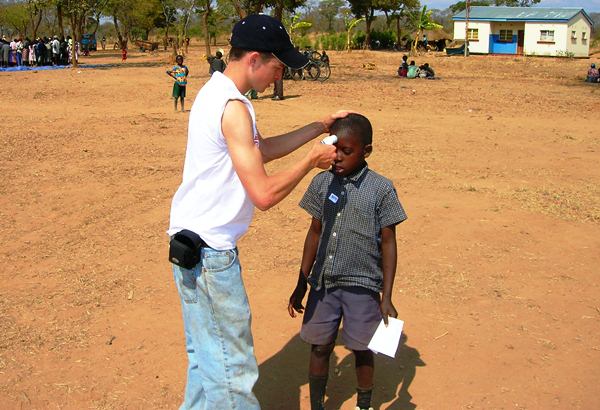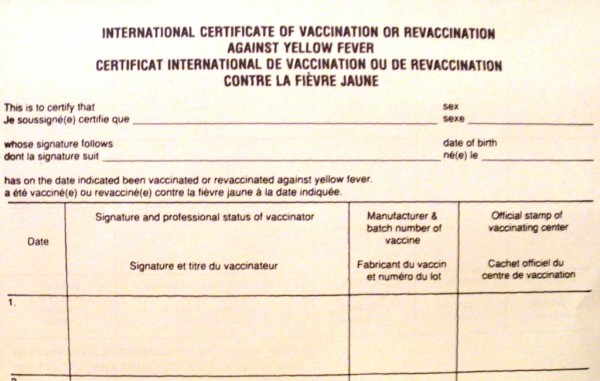TIPS AND INSIGHT thanks to Insure My Trip and Erin Fish of EMF Insurance Agency, Inc
Having the right policy and understanding the benefits and limitations of your coverage is an essential step in setting your mind at ease so that you can truly enjoy your trip.
So how does one navigate the labyrinth of red tape and fine print that surrounds travel insurance? Just thinking about it is enough to raise the blood pressure of many would-be career breakers, but fear not! We’ve got your back…and we’ve called in an expert.
When it comes to getting the right Global Health and Travel insurance to meet your unique needs, Insure My Trip is our career break insurance experts. They have years of experience assessing the unique needs of each of their globetrotting clients and can help you find the policy that is perfect for you, your trip, and your needs.
It’s hard to know where to start when it comes to insurance, but we have provided the following:
- Basic information and defintions that will help us get through the maze of terminology
- FAQ’s for Career Breakers
- Some scenarios to consider
- A video talking further about the whys and what of career break insurance
- Some resources to get further information
But first – a disclaimer! Insurance solutions are very dependent on a person’s situation, tolerance, and budget; we certainly couldn’t represent all of them here! Our aim is to give you a good start and then you can follow up with Erin or through our other online resources we’ve provided. In addition, this information is more specific to American travelers, as it tends to be the most complicated.
DEFINITIONS:
- Domestic (America) Health Insurance: Domestic health insurance plans are designed to benefit the member when services are needed inside the USA. This leaves many gaps in benefits for people who are traveling abroad. For Americans traveling abroad, health care services occurring outside of the USA can be covered under the insured’s domestic health insurance policy once the insured has met their out-of-network deductible. This could mean an exposure of thousands of dollars.Examples – your corporate coverage such as Blue Cross Blue Shield, Aetna, etc.
- Long-Term International (HIPAA-Compliant) plans resemble domestic health insurance plans, but apply to a worldwide and a nationwide network of doctors, hospitals, clinics, etc. They carry annual deductibles, annual out-of-pocket limits, maternity coverage (usually after 12 months of enrollment), and all of the perks of the travel insurance plans. Such plans are most appropriate for travelers who plan to spend 6 months or more abroad and for Ex-Pats planning to live in other countries for extended periods of time.This is the most comprehensive coverage for travel and can be used anywhere in the world, including when you return back to America. Examples – HTH Worldwide, 7 Corners
- Travel Insurance: Travel insurance is designed to bridge the gap in benefits that the domestic plans present…and more. Credible and reliable travel insurance carriers have a worldwide and a nationwide network of doctors, hospitals, clinics, etc. There are two main types – travel medical insurance and trip cancellation insurance. Examples – IMG, Travelex and many, many more!
- 1. Travel Medical Insurance: Offers medical benefits when a traveler is overseas. These plans typically pay for hospitalization, surgery, doctor office visits, prescription drugs, ground ambulance and emergency medical evacuation. These plans tend to be relatively inexpensive; however, they do not provide any other travel benefits beyond medical coverage. This type of insurance can be purchased on a per-trip basis (up to 180 days and renewable once) or annually (covering any and all trips less than 70 days each). *Coverage can be purchased for travelers who do not have a domestic health insurance plan. However, such plans do not cover pre-existing conditions.
- Trip Cancellation Insurance: Usually includes all the benefits of travel medical insurance, as well as other travel benefits such as trip cancellation, trip interruption, baggage loss, travel delay and more. These plans are designed to insure the investment of your trip. These plans offer the broadest coverage and are more expensive than travel medical policies because the rates are partly dependent on the cost of the insured’s trip. (This type of insurance can also be purchased without the medical benefits included.)
FAQ’S FOR CAREER BREAKERS
- What will these plans cover? Travel Medical insurance plans will cover:- Medical Services (Doctor office visits, surgery, anesthesia, labs & radiology, inpatient & outpatient hospital expenses, and more.- Dental Care required to an injury or for relief of pain- Prescription Drugs (outside of the USA)- Medical Evacuation to the nearest adequate facility (then home, if necessary) *This is often the most crucial aspect of Travel Medical plans– Bedside Visit (for one person to your place of hospital confinement)
– Accidental Death & Dismemberment (like Life Insurance)
– Repatriation of Remains
- For ‘career breakers’ (middle aged as opposed to student travelers,) what should we be getting?
Age isn’t necessarily the most important factor in deciding which type of travel insurance to buy. Buying the most appropriate type of travel insurance plan depends on the length of the trip, cost of the trip, risk tolerance, and travel budget. Trip Cancellation insurance is a good choice for expensive trips because of the financial protection features of these plans. Travel Medical insurance is a good choice for lower priced trips or longer trips (especially those trips exceeding 30 days
- If we get Travel Insurance, what coverage do we have when we return back to the US (either after our trip OR if we have to return because of an emergency)?
- Trip Cancellation insurance and Travel Medical insurance policies are designed to cover travelers while on a covered trip. These plans are considered limited duration plans and are not HIPAA compliant. Once the customer returns home, their benefits are exhausted. In some cases coverage can continue if the illness or injury sustained while on the covered trip persists.
- Will insurance companies look at travel insurance as ‘continuous coverage’ or by traveling for a year under travel insurance – will it appear that we have a ‘break in coverage’? More importantly, is a break in coverage bad? Short term travel insurance would not be considered credible ‘continuous coverage’ since it is a short term accident/sickness policy. This means there would be a ‘break in coverage’ if this was a persons only form of insurance. If they are planning to travel 6 months or longer; travelers should consider a Long-Term International health insurance plan, such as HTH Global Citizen. Global Citizen is considered creditable coverage and is administered using HIPAA guidelines.
- What happens when you return home to the US and need insurance coverage after traveling? Should this be considered when you are choosing travel insurance? You definitely need to consider what your return to the US looks like. When you are done traveling, the travel insurance runs out. It will normally not cover you once you get back to the US. Therefore you will need a plan for how you will be covered with you return home. Getting approved for a domestic health insurance plan is not easy in the USA. All health insurance applications are medically underwritten, and an applicant can be approved, declined, or approved with surcharges. If you are planning on traveling for a few months, and you already have a domestic health plan, it is suggested that you keep your domestic plan and purchase a travel insurance plan to supplement your coverage. This will often give you better benefits in the travel insurance plan and it will prevent any lapses in coverage.When planning to travel for an extended amount of time it may be worth it to buy a long term international plan, enabling a continuation in coverage indefinitely when you return home to the United States. However, Long-Term International plans are also medically underwritten.
- What do I do when I come return to the US? Getting approved for a domestic underwritten plan in the USA is not a guarantee. It can often include a lot of obstacles and may result in heavy surcharges or a declination, depending on the applicant’s medical history. If an illness or injury occurred during travel, the chances of approval become even more difficult. If you hold onto your domestic plan while traveling, or if you purchase a long-term HIPAA-compliant plan for your travels, you can avoid these complications upon your return. Your options when you return home and your Travel Insurance coverage has ended: Group-sponsored health plans (if you can secure a job that provides benefits)- Pre-existing Condition Insurance plan (government-subsidized plan)
- Purchase an individual domestic policy (this process can vary greatly depending on where you live, your past insurance coverage, age, and medical conditions).
- What are the advantages and disadvantages to keeping my domestic plan? The main advantages you have by keeping your domestic plan:- You will not have a lapse in credible coverage- You will already be insured in the USA when you return- You can purchase a Travel Medical insurance policy that covers pre-existing condition. What disadvantages do I have in keeping my domestic plan? Keeping your domestic plan can be a lofty expense to maintain while you are traveling.
- Other advice to take into consideration: When researching and purchasing travel insurance plans, it is important to purchase the plans from an admitted USA carrier (for example – HTH or 7 Corners). Such carriers are backed by the Department of Insurance and must abide by rules and regulations when upholding benefits and processing claims. Many travel insurance carriers are considered “off-shore” carriers, even though their offices are based in the USA (usually in Indiana). Such carriers can leave the insured exposed with little or no representation should benefits not be upheld or should claims not be processed or paid correctly.
SCENARIOS FOR DIFFERENT TYPES OF CAREER BREAKS
- I’m a career breaker and I am going to be traveling for 1-6 months. What should I be looking for with regards to travel insurance? You have a couple different option. If you have a domestic health insurance policy, it may be wisest to hold onto this policy and purchase a supplemental Travel Medical insurance policy to cover you at 100% and provide you with medical services and Emergency Medical Evacuation services while you are abroad. This way you will avoid having a lapse in credible coverage in your domestic health insurance plan. If your domestic plan is very expensive and you would like to keep your costs down, you can look into downgrading your domestic plan to secure a lower monthly premium. However, when you return from your trip it may be difficult to upgrade again.
- I’m a career breaker and I am going to be traveling for 6-12 months. What should I be looking for with regards to travel insurance?
- Option 1: If you have a domestic health insurance policy it may be wisest to hold onto this policy and purchase a supplemental Travel Medical insurance policy to cover you at 100% and provide you with medical services and Emergency Medical Evacuation services while you are abroad. This way you will avoid having a lapse in credible coverage in your domestic health insurance plan. *Such a plan will cover pre-existing conditions since you also carry a domestic plan.
- Option 2: Apply for a Long-Term HIPAA-compliant International Health Insurance plan to go into effect before you depart. (Whether you have a domestic insurance plan, or not.) Such a plan will act as a “global PPO health plan” and will serve as credible coverage. You can purchase such a plan to cover you worldwide or to cover you in all countries except for the USA. This is a commonly owned insurance policy for Ex-Patriots.
- Option 3: If you do not have a domestic insurance plan, or if you would like to cancel such a plan, you can purchase a supplemental Travel Medical insurance policy to cover you at 100% and provide you with medical services and Emergency Medical Evacuation services while you are abroad. *Such a plan will not cover pre-existing conditions since you do not also carry a domestic plan. Note: If you are out of the USA for 6 or more continuous months it CAN leave your domestic policy VOID. If you are planning to keep your domestic health insurance plan, make sure to contact your insurance carrier to inform them of your travels and request that they keep your policy in-effect. Get their answer in writing.
- I’m a career breaker and I am going to be traveling for 1 year or longer. What should I be looking for with regards to travel insurance? It is recommended that you apply for a Long-Term HIPAA-compliant International Health Insurance plan to go into effect before you depart. (Whether you have a domestic insurance plan or not.) Such a plan will act as a “global PPO health plan” and will serve as credible coverage. You can purchase such a plan to cover you worldwide or to cover you in all countries except for the USA. This is a commonly owned insurance policy for Ex-Patriots.
RESOURCES:
- For expert advice and no obligation to purchase, contact out Career Break Insurance Hotline via Insure My Trip – 855-773-9375. Their reps can lead you through a few questions to help you determine what may be right for your situation.
- Get a quote by filling out this form on Meet Plan Go!
- You’re not alone! Some of our readers shared the experiences they had when researching insurance options:- Health Insurance for American Travelers– Travel Health Insurance Providing Credible Coverage
- State law information can be found at the National Association of Insurance Commissioners
- United States Department of Labor Q&A on Health Coverage Portability
- High Deductible Health Plans and the Health Savings Account: This was a guest post on Lisa Lubin’s website which offered yet another option for travelers. The solution probably isn’t for everyone, but I did think it was inventive.
- David Lee of Go Backpacking struggles with a pre-existing condition in this post on Medical and Travel Insurance and speaks to the need to sometimes have more than just travel insurance.







 Travel has always been their hobby, but recently, Mike Watkins and Akiko Kubo decided to “cash-in” on their dreams of taking a career break to travel around the globe after seeing close friends’ and family’s lives end too soon. To avoid wondering what might have been, they are downsizing their comfortable lives into a backpack, and making way for opportunities undiscovered. Follow their 8-month, round-the-world, adventures on
Travel has always been their hobby, but recently, Mike Watkins and Akiko Kubo decided to “cash-in” on their dreams of taking a career break to travel around the globe after seeing close friends’ and family’s lives end too soon. To avoid wondering what might have been, they are downsizing their comfortable lives into a backpack, and making way for opportunities undiscovered. Follow their 8-month, round-the-world, adventures on 





